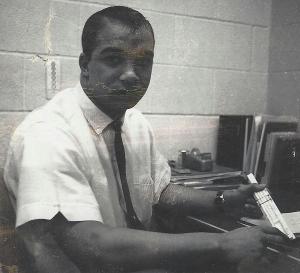It’s “cool” to be smart at Fenwick, and these Ph.D. scholars have taken their intellectual talents to a higher level as university professors.
By Mark Vruno
Fenwick instructors have honed developing minds of highly intelligent people over thecourse of 90 school years. From physics and politics to English and French, some of those students took their passions for learning to the next level by pursuing research, education and scholarship at some of the world’s most prestigious private and public universities.

At Princeton, the Ivy League research school with New Jersey roots dating back to 1746, two Fenwick alumni-turned-professors can be found teaching on campus: Thomas Duffy ’78 (geophysics) and John Mulvey ’64 (operations research/financial engineering). In Boston, Professor William Mayer ’74 has been a political-science guru at Northeastern University (established in 1898) for the past 28 years. After Fenwick, Mayer attended Harvard University in Cambridge, Massachusetts, from which he also earned a Ph.D. (in 1989). “I don’t like to move,” he dead-pans, “plus my wife loves the New England area.”
On the West Coast, one of Prof. Duffy’s classmates, Larry Cahill ’78, is a neuroscientist and professor in the Department of Neurobiology and Behavior at the University of California at Irvine. And in the Midwest, Robert Lysak ’72 is professor of physics and astronomy at the University of Minnesota in Minneapolis – Saint Paul.
Additionally, two members of the Class of 1961 were college professors and are now retired: Terrence Doody (English Literature) at Rice University in Houston and Thomas Kavanagh (French), most recently at Yale University in Connecticut. Another Professor Emeritus isJohn Wendt ’69, who taught Ethics and Business Law at the University of St. Thomas (Minnesota) for 30 years. (Read more about them.) Spread out geographically across the United States, Fenwick is the common denominator for these seven Ph.D.’s and college professors. Read on for a glimpse at their impressive works.
A Computing Love Affair

John Mulvey is a professor within Princeton’s Operations Research and Financial Engineering (ORFE) Department, which he founded. He also is a founding member of the interdisciplinary Bendheim Center for Finance as well as the Statistics and Machine Learning Center at the university. Mulvey is captivated by the ongoing revolution in information and machine-learning. The ORFE Department focuses on the foundations of data science, probabilistic modeling and optimal decision-making under uncertainty. “Our world is a very uncertain place,” he stresses.
The work Mulvey does has applications throughout the service sector, including in communications, economics/finance, energy/the environment, health-care management, physical and biological sciences, and transportation. In the past, he has worked with aerospace/defense-technology firm TRW (now part of Northrop Grumman) to help solve military problems, including developing strategic models for the Joint Chiefs of Staff (U.S. Department of Defense).
“Today we work with major firms, including some of the largest investors in the world, which are interested in integrating their risk,” Mulvey explains. For example, “hedge funds and private-equity firms need to manage their portfolios over time to protect themselves. When the crash occurred in 2008, people thought they were diversified. The banking and finance world refers to systemic risk as contagion,” which is the spread of market changes or disturbances from one regional market to others.
Mulvey also analyzes data for supply-chain management, which he calls a “transformative industry. Production and distribution models were separate before,” he points out, “but we’ve brought it all together now. Amazon has built its whole system based on this commerce model.”

Machines running algorithms and computer optimization became passions for him at a relatively young age. At Fenwick, Mr. Edward Ludwig helped mathematics to make sense for young John. “He was an amazing math teacher,” Mulvey says of Ludwig. “His class was fantastic. I didn’t necessarily want to be an engineer but felt I could go into a technical area.
“In the 1960s we were at the cusp of computing, and the University of Illinois had one of the world’s most powerful supercomputers at the time,” recalls Mulvey, who grew up on the West Side of Chicago and attended the old St. Catherine of Siena Parish. “That’s why I wanted to go there, and I fell in love with computing.”

He next ventured west to study business administration at the University of Southern California (USC) and the University of California (Cal), then earned a second master’s degree in management science in ’72 from the University of California at Los Angeles (UCLA). Three years later Mulvey completed his Ph.D. at UCLA’s Graduate School of Management. His dissertation topic, “Special Structures in Large Scale Network Models and Associated Applications,” won the 1976 American Institute of Decision Sciences Doctoral Dissertation Competition.
Mulvey taught for three years at the Harvard Business School and, 41 years ago, came to Princeton “to have an impact at a smaller school,” he says. (Princeton has some 5,200 under-grads.) “I came here to grow the basic, general engineering program for undergraduates.” The 72-year-old thoroughly enjoys his work: “If you had a job like mine, you wouldn’t want to retire.”
Continue reading “Alumni Friars Teaching in Academia”


 School records dating back 64 years confirm that alumnus Richard Cochrane ’59 blazed a trail as Fenwick’s very first African-American student and graduate. Originally from Maywood, IL, Mr. Cochrane now lives in the sunny Southwest. In high school, he was active in student government (class treasurer and secretary) and played football and basketball (captain).
School records dating back 64 years confirm that alumnus Richard Cochrane ’59 blazed a trail as Fenwick’s very first African-American student and graduate. Originally from Maywood, IL, Mr. Cochrane now lives in the sunny Southwest. In high school, he was active in student government (class treasurer and secretary) and played football and basketball (captain).
